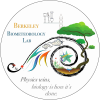Reports
Contents
| Title: | Water Level sensor calibration with staff gauge | |||||||||||||||||||||||||||||||||||||||||||||||||||||||||||||||||||||||||||||||||||||||||||||
| Date: | 2018-04-24 - 2020-10-05 | |||||||||||||||||||||||||||||||||||||||||||||||||||||||||||||||||||||||||||||||||||||||||||||
| Data File: | WLcalib_SW.csv WLcalib_MB.csv WLcalib_WP.csv WLcalib_EP.csv WLcalib_EE.csv |
|||||||||||||||||||||||||||||||||||||||||||||||||||||||||||||||||||||||||||||||||||||||||||||
| Refers to: | SW, WP, MB, EE, EP, sn 20010375, sn 70011229, sn 20010770, 70011236, sn 20010026, sn 70011234, 20010769 | |||||||||||||||||||||||||||||||||||||||||||||||||||||||||||||||||||||||||||||||||||||||||||||
|
We installed metric staff gauges at our 5 wetland sites in spring/summer 2018. These staff gauges are bolted to the tower scaffolding, so their depths should (theoretically) not change through time, as long as the scaffolding does not move. The staff gauge water level was recorded at each site visit. I used a linear regression to calculate an offset between the staff gauge and the continuous water level sensor (CS450 or CS451). This helps interpret the continuous water level through its multiple shifts in position. Once the water level sensor is benchmarked against the staff gauge, it's a simple offset to any other point in the wetland. The given conversion from psi to cm is 70.41 cm/psi. In most cases the slope of the calibration was within 5% of the given conversion, so I mainly focused on the offset. Conclusion: I have updated the water level sensor offsets for these 5 sites in the smap and range&equation pages. SMAP: https://nature.berkeley.edu/biometlab/bmetdata/equipment.php?screen=smap Range & Equation: https://nature.berkeley.edu/biometlab/bmetdata/sfields.php?scrn=rangeeq For Mayberry, West Pond, and East End, I used this calibration with the staff gauge to benchmark earlier water level sensor offsets. I used field and equipment notes, and in some cases the MATLAB met scripts, to track how the sensor height has changed through time. For the few sites that have water level sensors but do not have staff gauges (Bouldin Corn, Sherman Wetland Temp Tower), I had to calculate the sensor offsets solely based on field/equipment notes.
 Sherman Wetland Figure 1. Time series of continuous water level sensor and manual staff gauge measurements at Sherman Wetland. There were 3 time periods for this calibration: 2018-07-11 to 2018-10-18, 2018-11-01 to 2019-06-04, and 2019-06-20 to 2020-06-16. One more time period should be added in the future, but we don't have enough data yet for a confident calibration: 2020-09-10 to present. (Water level sensor was broken 2020-07-30 to 2020-08-28.)
Figure 2. Linear regression of staff gauge measurements and water level sensor data at Sherman Wetland. The sensor data has been converted to cm using the given 70.41 psi/cm conversion factor. There are 3 different regressions, 1 for each period of the whole calibration period. The regression slopes are within 1% of 70.41. Â Mayberry Figure 3. Time series of continuous water level sensor and manual staff gauge measurements at Mayberry. There are 2 time periods in this calibration: 2018-05-16 to 2020-03-11 and 2020-04-03 to 2020-09-10.
Figure 4. Linear regression of staff gauge measurements and water level sensor data at Mayberry. The sensor data has been converted to cm using the given 70.41 psi/cm conversion factor. There are 2 different regressions, 1 for each period of the whole calibration period. The regression slopes are 2-5% different from 70.41. Â West Pond Figure 5. Time series of continuous water level sensor and manual staff gauge measurements at West Pond. Amazingly, this sensor has not been moved since 2012, so there is only 1 time period for this calibration.
Figure 6. Linear regression of staff gauge measurements and water level sensor data at West Pond. The sensor data has been converted to cm using the given 70.41 psi/cm conversion factor. There are 2 different regressions, 1 for each period of the whole calibration period. The regression slope is within 1% of 70.41. Â East Pond Figure 7. Time series of continuous water level sensor and manual staff gauge measurements at East Pond. The East Pond tower scaffolding was adjusted on 2019-09-10. This only affected the offset in the calibration by 1-2cm, so for simplicity I decided to ignore the scaffolding adjustment and treat this whole calibration period as one time period.
Figure 8. Linear regression of staff gauge measurements and water level sensor data at West Pond. The sensor data has been converted to cm using the given 70.41 psi/cm conversion factor. There is only 1 calibration period. The regression slope is within 1% of 70.41. Â East End Figure 9. Time series of continuous water level sensor and manual staff gauge measurements at East End. There were 3 distinct time periods: 2018-05-16 to 2018-08-23, 2018-09-18 to 2019-09-10, 2019-09-18 to 2020-05-19. One more time period should be added in the future, but we don't have enough data yet for a confident calibration: 2020-06-09 to present.
Figure 10. Linear regression of staff gauge measurements and water level sensor data at East End. The sensor data has been converted to cm using the given 70.41 psi/cm conversion factor. There are 3 different regressions, 1 for each period of the whole calibration period. The regression slopes are 1%, 4%, and 8% different from 70.41. However, the larger differences also have more scatter than other regressions, so I think it would be best to keep the given 70.41 cm/psi conversion. |
||||||||||||||||||||||||||||||||||||||||||||||||||||||||||||||||||||||||||||||||||||||||||||||
| |

